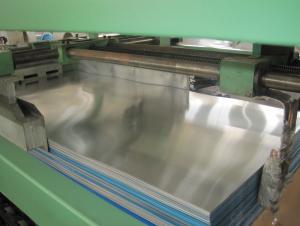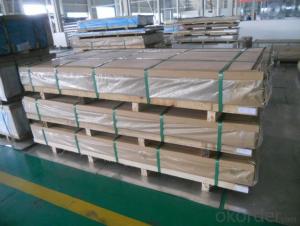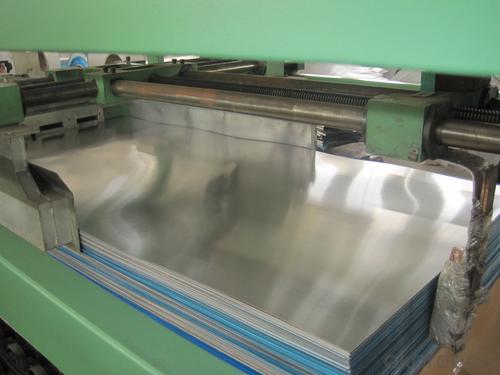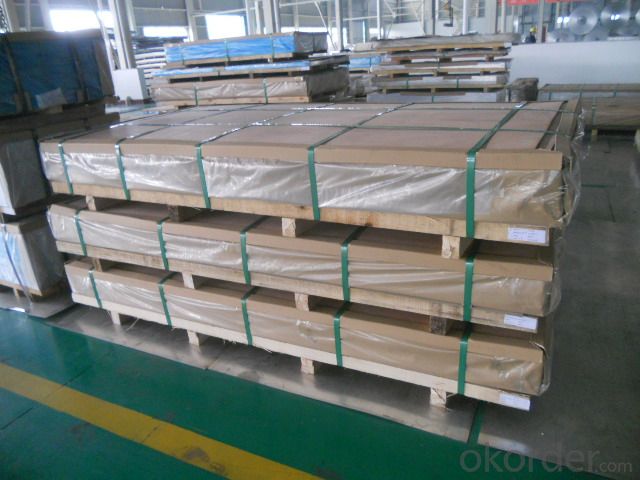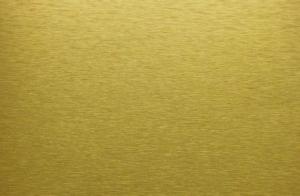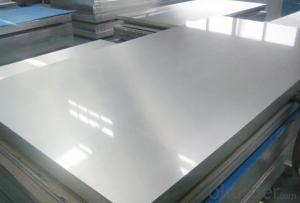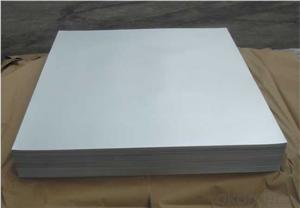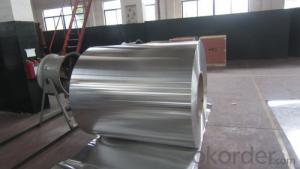Baked Enamel Aluminum Sheets - Aluminium Plain Sheet/Coil 3003 3105 5052
- Loading Port:
- Shanghai
- Payment Terms:
- TT OR LC
- Min Order Qty:
- 5 m.t
- Supply Capability:
- 5000 m.t/month
OKorder Service Pledge
OKorder Financial Service
You Might Also Like
1.Tolerance: thickness tolerance +/-1.5%, width tolerance +/-1mm
2.Application and Usage:
Building Material , Insulation, Shoes &Tents Eyes,Corner Beads,Automotive Industrial, POP Can Bottle and Cap,Deep-Proceeding Case,light industry, TV back board,Street Sign, PP caps, Cell mask and so on.
3.Surfact Quality :
Be free from Oil Stain, Dent, Inclusion, Scratches, Stain, Oxide Dicoloration, Breaks, Corrosion, Roll Marks, Dirt Streaks and other defect which will interfere with use,
4.Mechenical Property:
Chemical Composite and Mechanical Property could meet the requirements of GB/T, ASTM, ENAW, JIS Standard
5.Packing:First, plastic cloth with drying agent inside; Second, Pearl Wool ; Third, wooden cases with dry agent , fumigation wooden pallets, aluminum surface could cover blue PVC film
6.Certificate: ISO9001:2008, SGS and ROHS(if client request, paid by client), MTC(plant provided), Certificate of Origin(FORM A, FORM E, CO), Bureau Veritas and SGS (if client request, paid by client), CIQS certificate
7.Month Capacity: 5000MT/Month
8.Trade Terms: EXW,FOB,CIF,CNF
9.Payment: T/T or L/C at sight

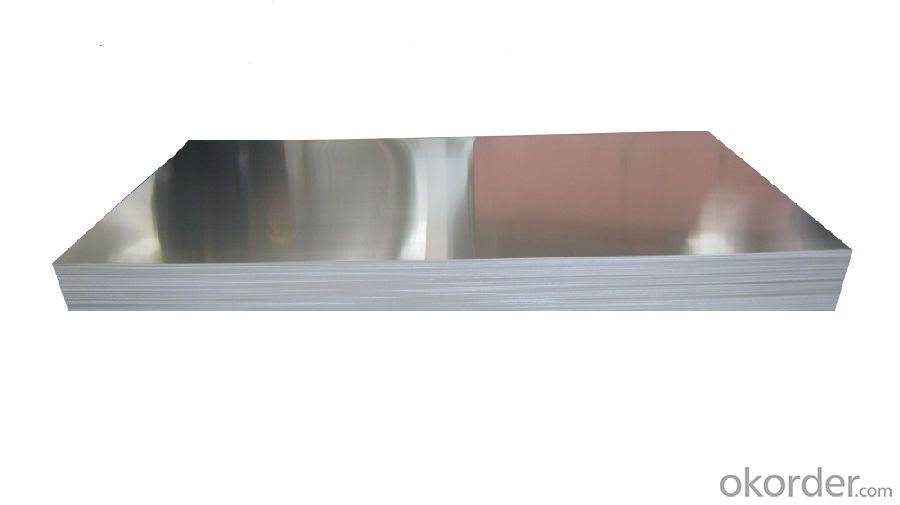
- Q: An aluminum engine block has a volume of 4.77 and a mass of 12.88 .
- For the best answers, search on this site okorder (2.7 g / cm?) x (1 kg / 1000 g) x (100 cm / 1 m)? = 2700 kg / m?
- Q: What are the common thicknesses available for aluminum sheets?
- The available thickness options for aluminum sheets vary depending on the specific application and industry requirements. Some commonly found thicknesses for aluminum sheets include 0.025 inches (0.635 mm), 0.032 inches (0.81 mm), 0.040 inches (1.02 mm), 0.050 inches (1.27 mm), 0.063 inches (1.6 mm), 0.080 inches (2.03 mm), 0.090 inches (2.29 mm), 0.125 inches (3.18 mm), 0.190 inches (4.83 mm), and 0.250 inches (6.35 mm). These thicknesses see frequent usage in industries such as construction, automotive, aerospace, and manufacturing. It should be noted, however, that specialized applications may require custom orders or fabrication to meet specific thickness requirements.
- Q: Aluminum standard 30*25*2500 to 1000 1 how to calculate the number of materials needed?. 2 how to calculate the cutting loss?
- How many density units should be used in international units per kilogram of cubic meters, so that the unit of mass is kilogram? Weight = quality *9.81. The unit of cattle per kilogram is 5.4 kg of pure aluminum, and the weight is about 53 cows
- Q: For example, now the price of aluminum is 30000 yuan / ton. How much is that 2mm aluminum sheet with 1 square meters? What's the formula?What about the stainless steel plate, iron plate, and galvanized sheet? Can these (yuan / ton) be converted into (yuan / square)?Hurry! Which expert can I help you?!
- Know that the density of aluminum is 2.7 g / cubic centimeter or 2700 kg / cubic meterThen 2mm thick aluminium plate with a weight of 1 square meters is:M= P *v=2700*1*0.002=5.4 (kg)=5.4*10^ (-3) tonsThe price of aluminium is 30000 yuan / ton nowTherefore, the title of the money required should be 30000* (5.4*10^ (-3)) =162 yuanEmpathy,The density of iron is 7.8 KG/M3The density of stainless steel is 7.52-7.75 KG/M3The same is true of galvanized sheets, as long as the density is known
- Q: Can aluminum sheets replace traditional roofing materials such as wood or metal?
- <p>Yes, aluminum sheets can be used as an alternative to traditional wooden or metal roofing. They offer several advantages, including resistance to corrosion, lightweight nature, and durability. Aluminum is also recyclable and can be painted or coated to provide a long-lasting finish. However, it's important to consider factors such as cost, local climate, and the specific requirements of the building project when deciding whether to use aluminum sheets for roofing.</p>
- Q: Are aluminum sheets suitable for chemical storage containers?
- Chemical storage containers are usually not appropriate for aluminum sheets. Despite aluminum's reputation for being resistant to corrosion, it can still interact with certain chemicals, causing the container to deteriorate and potentially contaminate the substance being stored. In addition, aluminum is a relatively fragile metal and may not offer sufficient strength and durability for the long-term storage of hazardous chemicals. It is recommended to utilize materials that are explicitly designed for chemical storage, such as high-density polyethylene (HDPE), polypropylene (PP), or stainless steel, as they provide exceptional resistance to chemicals and structural stability.
- Q: What are the maximum dimensions of aluminum sheets?
- The maximum dimensions of aluminum sheets can vary depending on the manufacturing capabilities of different suppliers. However, in general, aluminum sheets are available in a wide range of sizes to meet various application requirements. Commonly, the maximum width of aluminum sheets can be up to 72 inches (6 feet), while the maximum length can reach around 240 inches (20 feet). These dimensions can provide ample material for a wide range of projects, including construction, manufacturing, and industrial applications. It is important to note that specific suppliers may have their own limitations, so it is advisable to consult with them directly to determine the maximum dimensions available for aluminum sheets.
- Q: Can aluminum sheets be used for architectural sunshades?
- Indeed, architectural sunshades can make use of aluminum sheets. The lightweight property, durability, and resistance to corrosion have rendered aluminum a favored option for sunshades. Furthermore, its high malleability permits the creation of diverse shapes and designs, catering to the architectural aesthetics. By effectively obstructing sunlight and minimizing heat absorption, aluminum sunshades furnish shade and establish a more pleasant atmosphere. Additionally, aluminum qualifies as a sustainable material, effortlessly recyclable, thus qualifying as an environmentally conscious choice for architectural sunshades.
- Q: I bought a house with aluminum wiring. Its about 1600 square feet. I have not had any problems with the electric but I read all these story's about how terrible aluminum wiring is.. is it worth the cost to replace? Most houses on my street have it also.. they have had no problems.. house was built in 79.How much would it cost to replace? would walls have to come down to do it?
- RE: My house has aluminum wiring? I bought a house with aluminum wiring. Its about 1600 square feet. I have not had any problems with the electric but I read all these story's about how terrible aluminum wiring is.. is it worth the cost to replace? Most houses on my street have it also.. they have had no problems.. house was...
- Q: Heating aluminum plate, heating scheme, urgent ~!
- For aluminum heating silicon heating plate is a good choice. The four corners can be fixed by screws, Beijiao can. Installation is very convenient. I was in the goodway procurement. They are guaranteed for one year.
Send your message to us
Baked Enamel Aluminum Sheets - Aluminium Plain Sheet/Coil 3003 3105 5052
- Loading Port:
- Shanghai
- Payment Terms:
- TT OR LC
- Min Order Qty:
- 5 m.t
- Supply Capability:
- 5000 m.t/month
OKorder Service Pledge
OKorder Financial Service
Similar products
Hot products
Hot Searches
Related keywords
